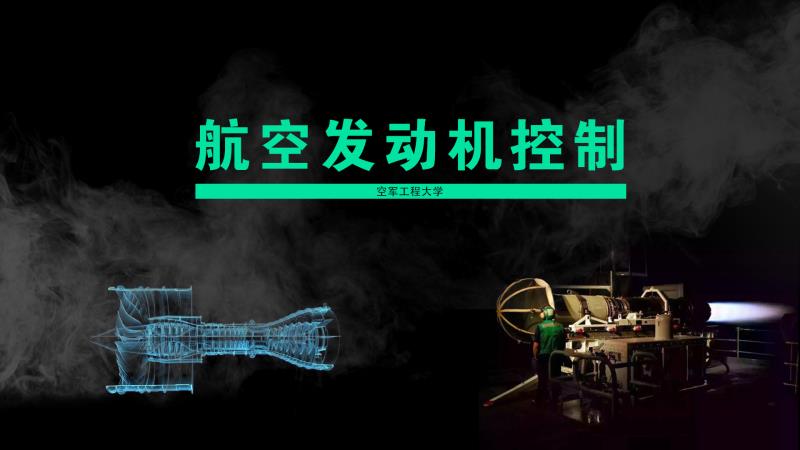
当前课程知识点:Diagnostics in Chinese Medicine > Week 7 Diagnosis methods: Observation (1) > 6.1.4 Observation of figure and posture > 6.1.4 Observation of figure and posture
返回《Diagnostics in Chinese Medicine》慕课在线视频课程列表
返回《Diagnostics in Chinese Medicine》慕课在线视频列表
下面我们继续学习全身望诊之
望姿态
望态又指望姿态
是观察病人动静姿态
和肢体的体位变化和异常动作
来诊察病情的方法
为什么望姿态可以诊病
首先
因为人体的动静姿态与机体的阴阳盛衰
和病性的寒热虚实关系密切
比如
躁动不安的人 通常机体功能比较亢进
这种人患病
常常多见于阳证 热证和实证
而喜静懒动的人
通常机体功能比较衰退
这也就是那种容易宅在家里面的人
这种人患病
常见于阴证 寒证和虚证
另外 人体的肢体活动受到心神支配
与经脉及筋骨 肌肉的状况密切相关
所以 望人的姿态变化
不仅可以反映我们人体的阴阳盛衰和病情的寒热虚实
也可以反映心神和经脉 筋骨以及肌肉的病变
望姿态主要有三个内容
即望动静姿态
望衰惫姿态
和望异常动作
望姿态第一个内容
就是望动静姿态
动静姿态的诊断要点是什么
我们来看这两张图
这张图 可以看出这个病人喜动
动作比较僵硬
喜仰喜伸
他的病变通常是属于阳证 热证 实证
而这个病人
他喜静
动作比较柔弱
喜俯喜屈
他的病变 一般是属于
阴证 寒证和虚证
下面我们学习一下
动静姿态中的强迫体位
强迫体位 有两种
第一种是 但坐不卧
病人只能坐着或者半坐位 不能平躺
如果平躺着 会发生气逆
通常但坐不卧见于
肺胀或者是胸水 腹水的病人
我们这里用三张图片来说明一下
第一张 是端坐呼吸
这是肺水肿临终前的一个表现
第二张 是肺胀的病人
他只能采取一个高枕的半卧位
第三张 是腹水的病人
也只能采取坐位
这三种病人 都只能采取坐位
或者是半坐位
如果平躺着 他们就会觉得呼吸困难
这是一种强迫体位 病情比较重
第二种强迫体位 是但卧不坐
病人坐则眩晕
这个病人 是一个晚期癌症的病人
气血大亏
或者是脱血夺气的病人
她只能躺着 不能够坐起来
这也是一种强迫体位
动静姿态中 我们还要注意的一种特殊姿态
就是在生活中 常有保护的动作
中医称为 护处必痛
比如
护着头
常是出现了头痛
护着牙
是牙痛
护着胸
是胸痛
胸中有心和肺 所以胸痛可能与肺的病变
和心的病变有关
护着胃 通常是胃痛
护着腹部 通常是腹痛
所以特殊姿态的意义是 护处必痛
我们要注意跟望诊结合起来
望姿态第二个内容 是望衰惫姿态
衰惫姿态 通常代表了五脏六腑的精气虚衰
功能低下的表现
通常属于病重的病人
我们现在看到这张照片 她的精神衰惫
面色萎黄晦暗
喘 咳 短气不得卧
头部无力抬举
这种病人 多为久病伤肾
元气衰惫的一个表现
通常病情比较重
望姿态的第三内容
就是望异常动作
比如
这个病人 颈项强直 两目上视
四肢抽搐 角弓反张
通常见于肝风内动的病人
这个病人 突然昏倒 不省人事
口角歪斜 半身不遂
通常见于中风病
左边这张图 是一个年轻人 他只有口眼歪斜
并没有半身不遂 病情是比较轻的
而右边这张图 是一个老年人
他是有昏倒的病史
苏醒后有口眼歪斜 半身不遂
病情比较重
这两种情况 都是属于中风
不过左边的中风 病情比较轻 为中经络
右边的老人中风 病情比较重 为中脏腑
下面这两张图中的病人 突发昏倒
不省人事
口吐涎沫 四肢抽搐 醒后如常
这可见于癫痫病的病人 中医称为痫病
这一张图
是一个小儿麻痹症的小孩
他的肢体软弱 行动不便
通常见于痿病
这张图 表现为关节拘挛 曲伸不利
通常见于痹病
也就是关节炎的病人
这个小孩 手足伸屈而扭转
挤眉眨眼 呶嘴伸舌 状似舞蹈 不能自制
这是儿童的手舞足蹈症
是由于气血不足 风湿内侵所导致的病变
以上是我们学习全身望诊之望态的内容
现在我们已经将全身望诊的
望神 望色 望形体和望姿态
全部讲述完毕
接下来我们将学习
局部望诊的内容
本节课就讲到这里
-Introductory remark
--QQ groups、WeChat public account
-Introduction
--【Discussion 1】Why do you want to take this course?
-Unit test for Introduction
-1.1 Yin-yang theory
-1.2 The theory of five elements
--1.2.1 The theory of five elements
--1.2.2 Application of the theory of five elements
-Frequently Asked Questions
-Unit test for week 1
-2.0 Outline
--【Discussion 2】How to understand the holistic view centered on the Zang Fu theory?
-2.1 Liver
--【Discussion 3】Why is repose more important than vigorous exercise in recuperation for patients with
-2.2 Heart
-2.3 Spleen
-2.4 Lung
--2.4 Lung
-2.5 Kidney
-2.6 Six fu organs
-Frequently Asked Questions
-Unit test for week 2
-3.1 Qi
--3.1 Qi
-3.2 Blood
-3.3 Body fluid
-3.4 The relationship of qi, blood and body fluid
--3.4 The relationship of qi, blood and body fluid
--【Discussion 4】A discussion about the theory of qi, blood and body fluid
-Frequently Asked Questions
-Unit test for week 3
-4.0 Outline
-4.1 Six exogenous factors
--4.1.2 Nature and pathogenicity of wind and cold
--4.1.3 Nature and pathogenicity of summer heat and damp
--4.1.4 Nature and pathogenicity of dryness and fire
-4.2 Etiology of visceral impairment
--4.2 Etiology of visceral impairment
-Frequently Asked Questions
-Unit test for week 4
-5.0 Outline of inquiry
--【Discussion 5】If you were a patient, how would you describe your condition to your doctor first?
-5.1 Inquiry of Chills and fever
--5.1.1 Chills and fever(Aversion to cold with fever)
--5.1.2 Chills and fever(Chills without fever)
--5.1.3 Chills and fever(Fever without chills)
--5.1.4 Chills and fever(Alternative chills and fever)
--【Discussion 6】How to understand "if you have clinical manifestations of cold, that is exterior syndr
-5.2 Inquiry of perspiration
-Frequently Asked Questions
-Unit test for week 5
-5.3 Inquiring of pain
--【Discussion 7】How to understand "stagnation leading to pain and innourish leading to pain"?
-5.4 Inquiring of head, body, thorax and abdomen
--5.4 Inquiring of head, body, thorax and abdomen
-5.5 Inquiring of ears and eyes
--5.5 Inquiring of ears and eyes
-5.6 Inquiring of sleep
-5.7 Inquiring of food and drink, appetite and taste
--5.7 Inquiring of food and drink, appetite and taste
-5.8 Inquiring of defecation and urination
--5.8.1 Inquiring of defecation
--5.8.2 Inquiring of urination
-5.9 Inquiring of infantile and women's disease
--5.9 Inquiring of infantile and women's disease
-Unit test for week 6
-6.0 Outline of Observation
--【Discussion 8】Please use the whole body inspection (including the expression, complexion and figure)
-6.1.1 Observation of vitality
--6.1.1 Observation of vitality
-6.1.2 Observation of the color
--6.1.2.1 The content, principles of inspection of the color
--6.1.2.2 Indication of diseases by five colors
--【Discussion 9】How do you understand the normal complexion of a normal people?
-6.1.3 Observation of the appearance
--6.1.3 Observation of the appearance
-6.1.4 Observation of figure and posture
--6.1.4 Observation of figure and posture
-Unit test for week 7
-6.2.1 Observation of head and face
--6.2.1 Observation of head and face
-6.2.2 Observation of five sensory organs
--6.2.2.1Observation of five sensory organs(observation of eyes,ears,nose)
--6.2.2.2Observation of five sensory organs(observation of lips,teeth and gums,throat)
-6.2.3 Observation of body
-6.2.4 Observation of limbs
-6.2.5 Observation of two lower orifices
--6.2.5 Observation of two lower orifices
-6.2.6 Observation of skin
-6.3 Observation of excreta
-6.4 Observation of infantile fingerprints
--6.4 Observation of infantile fingerprints
-Frequently Asked Questions
-Unit test for week 8
-7.1 Outline of tongue inspection
--7.1.1 The morphology and structure of the tongue
--7.1.2 The principle of tongue examination
--7.1.3 The method and precaution of tongue examination
--7.1.4 The content of tongue examination, normal tongue
-7.2 Inspection of tongue structure
--7.2.1 Observe the color of tongue
--7.2.2 Observe the shape of tongue
--7.2.3 Observe the states of tongue
--7.2.4 Observation of sublingual vein
-7.3 Observation of tongue coating
--7.3.1 Observation of coating texture
--7.3.2 Observe the color of coating
-7.4 Clinical significance of tongue diagnosis
--7.4 Clinical significance of tongue diagnosis
--【Discussion 10】Why to observe the tongue can be used to diagnose disease?
-Unit test for week 9
-8.1 The principle of pulse examination
--8.1 The principle of pulse examination
-8.2 The regions and methods of pulse examination
--8.2 The regions and methods of pulse examination
-8.3 The elements of pulse examination and the normal pulse
--8.3 The elements of pulse examination and the normal pulse
-8.4 Characteristics and significance of pulse
--8.4.1 Superficial pulse, deep pulse, slow pulse, rapid pulse
--8.4.2 Surging pulse, thin pulse, long pulse, short pulse
--8.4.3 Feeble pulse, forceful pulse, slippery pulse, uneven
--8.4.4 Taut pulse, tense pulse,soggy pulse, moderate pulse
--8.4.5 Knotted, slow-regular-intermittent, irregularly abrupt
-8.5 Similar pulse, concurrent pulse, pulse indicating deterioration of visceral qi۞
--8.5 Similar pulse, concurrent pulse, pulse indicating deterioration of visceral qi۞
--【Discussion 11】Why is complex pulse more common than single-factor pulse?
-8.6 Women’s pulse, children’s pulse
--8.6 Women’s pulse, children’s pulse
-8.7 The clinical significance of pulse diagnosis
--8.7 The clinical significance of pulse diagnosis
-Unit test for week 10
-9.1 Listening
-9.2.1 Abnormal sound
-9.2.2 Abnormal language
-9.2.3 Respiratory abnormality
--9.2.3 Respiratory abnormality
-9.2.4 Cough
--【Discussion 12】How to observe the patient's cough sound and sputum changes to determine whether the
-9.2.5 Abnormal sounds of the stomach and intestines
--9.2.5 Abnormal sounds of the stomach and intestines
-9.3 Smelling
--【Discussion 13】How to diagnose by smelling?
-Unit test for week 11
-10.1 The method, meaning and precautions of palpation
--10.1 The method, meaning and precautions of palpation
-10.2 Contents of palpation
--10.2.1 Palpating chest and hypochondrium
--10.2.2 Palpating stomach and abdomen
--10.2.4 Palpating hands and feet, palpating acupoints
--【Discussion 14】How to determine whether external or internal injuries?
-Unit test for week 12
-Conclusion
-Final Exam
--Final Exam


